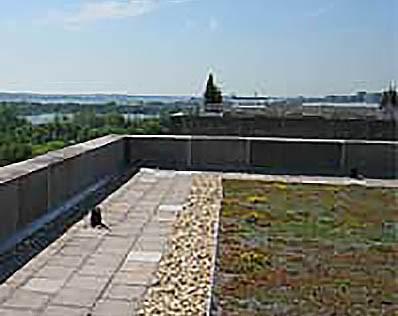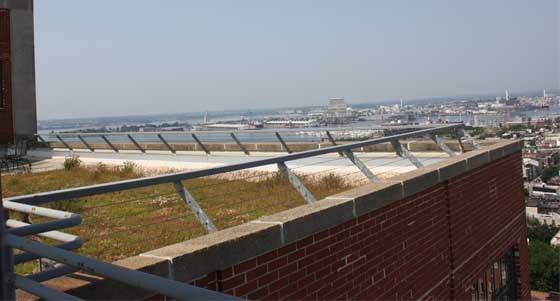Last updated: March 31, 2022
Article
Green Roofs on Historic Buildings: Visual Impact

The visual impact of a green roof on a historic building is of primary importance. It must first be determined whether the building can accommodate the addition of a green roof without altering its character. A green roof and its plantings, as well as ancillary features such as outdoor furnishings, on a historic building should not be visible from the public right of way. Thus, the same guidance for assessing the compatibility of a new rooftop addition proposed for a historic building should be followed to determine if a green roof would be appropriate.
Flat Roof
A historic building with a flat or slightly–sloped roof is the most suitable for the installation of a green roof. Ideally, the building should have a substantial parapet to help shield the green roof from view. A green roof should also be set back from the edge of the roof, particularly on a low–rise building or if there is not a sufficient parapet to hide it. Sometimes an intensive green roof with tall plants may not be appropriate though an extensive roof with low plants that is less visible might work. Another possibility may be to put the green roof on non–contributing portions of the property, or on new construction, as long as it does not affect the character of the historic property.

Safety Features
Not all green roofs are planned as usable space and some only provide access for periodic maintenance. A green roof that is accessible can be a desirable amenity for building occupants, but it must also comply with life–safety codes. Thus, the compatibility of safety features on accessible green roofs, such as railings and lighting fixtures, must also be considered. Installing a railing around the perimeter of the accessible portion of the roof is the most common requirement. A railing must be set back so that it is not visible or only minimally visible and does not detract from the historic character of the building. The height, design and material of the railing and other safety features must also be addressed to ensure that they have minimal impact on the historic building.
